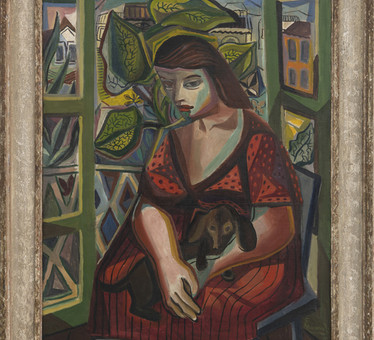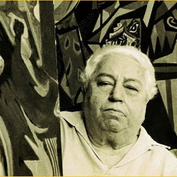Emiliano Di Cavalcanti

The sensitivity with which Di Cavalcanti elaborated the innovations of modernism in his work stems proportionately from the intimacy with which he imbued his plastic force in what is fleeting and impure in life. In constant company with a cast of characters, to whom he conferred archetypal status, Di Cavalcanti paved the way for our first modernism with works that recreate figuration through the
invention of national imagery.
From the beginning of his production, the Rio de Janeiro artist showed interest in themes from the urban social context of Rio de Janeiro, such as in the works Figura (1920) and Friends [Bohemians] (1921). In the early 1920s, Di Cavalcanti played a decisive role in bringing together the São Paulo modernist group and in organizing and publicizing the Modern Art Week of 1922, an event that is considered a fundamental milestone in the renewal of the arts in Brazil. In addition to participating as an exhibitor, Di Cavalcanti is credited with the very proposal of the Week, as well as the production of the emblematic promotional
flyer.
However, it was after his trip to Paris in 1923 that works began to appear that characterize the singularities of Di Cavalcanti’s work. The stay in the French capital gave birth to Di the mission of building a new national image, of elaborating the modern representation of Brazilian civilization. Recalling that period, the artist recounts that immersion in Parisian cultural effervescence “transformed my love of life into love for everything civilized. And as a civilized person I began to know my land”. This love for the civilized turns to the national as a land open to a new meaning
.
In 1925, the Samba canvas appeared as a fleshy and succulent fruit of this scope: in an impressive richness of colors and under the schematized design that refers to the Paris School, there are the passistas, new dytirambic priestesses with an ecstatic look who wield not the Mediterranean blonde, but the rough road of the clay. Greeting the messengers of popular singing, the dancer in red applauds and twirls, who indulges in the musical enchantment of the fine samba artist; the passionate bohemian, and the vanquished drunkard, conclude the spatiality of Di Cavalcanti’s altar to Brazilian
culture.
The works produced throughout the 1930s reinforce the artist’s interest in the country’s social issues, such as in the cartoon series The Brazilian Reality (1930), an acid opposition to Vargas’s dictatorial government. Also during this period, the color of Di Cavalcanti’s works intensified and takes on a notable role in the compositions, as can be seen in the solar work Seresta (1930) and in Five Young Women of Guaratinguetá (1930). His work as a dedicated colorist continues throughout Di’s pictorial production, giving substance to experimentation with figuration in works such as Fishermen (1946), Woman in a Hat (1952) and The Great Carnival (1953)
.
Capturing a universe of ideal types, Di Cavalcanti’s artistic experimentation occurs through his deep and continuous involvement, his faithful and disinterested friendship with these true totems of the ideal of Brazilianism that he found sometimes on the screen, sometimes at his side, crossing the bohemia of the nights.
G.G.S
